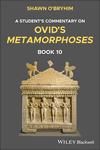Introduction
Summary
Most of what we know about the Roman poet Publius Ovidius Naso comes from Tristia , a collection of autobiographical poems that he wrote after Augustus relegated him to the Black Sea. Ovid describes Amores as a work of his youth (Tristia 4.10.57–58). It originally consisted of five books; a revision reduced it to three, which is the version that has survived. With Metamorphoses , Ovid exchanges the elegiac couplets of his love poetry for the dactylic hexameter of epic. Ovid's sources for the nearly two hundred and fifty stories that comprise his Metamorphoses span the history of Greek and Latin literature from Homer to his own time. Book 10 of Ovid's Metamorphoses tells the story of the mythic bard Orpheus, whose wife died just after their wedding from the bite of a snake.



